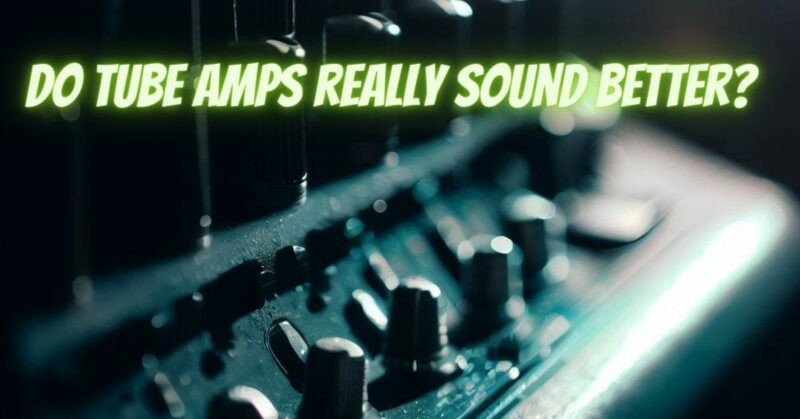In the realm of audio amplification, few debates have garnered as much attention as the one surrounding tube amplifiers. These vintage technology wonders have earned a legendary reputation for their warm, rich, and sometimes nostalgic sound. However, as technology has evolved, solid-state amplifiers have made significant advancements, blurring the lines between traditional tube superiority and modern innovation. In this article, we will explore the age-old question: Does the sound superiority of tube amplifiers truly hold true in today’s audio landscape?
Understanding Tube Amplifiers:
Tube amplifiers, also known as valve amplifiers, utilize vacuum tubes to amplify audio signals. These glass-encased tubes are revered for their unique sonic characteristics, often described as warm, harmonically rich, and even somewhat “organic” in nature. Tube amplifiers introduce even-order harmonic distortion, which some listeners find pleasing and conducive to a more natural sound.
Strengths of Tube Amplifiers:
- Harmonic Distortion: The harmonic distortion introduced by tubes is often associated with a more “musical” sound, as it can add depth and character to audio recordings.
- Tonal Warmth: Tube amplifiers are known for their warm and smooth sound signature, particularly in the midrange frequencies. This warmth can lend a certain vintage charm to music.
- Soft Clipping: Tubes tend to clip more gradually when pushed to their limits, resulting in a smoother transition between clean and distorted tones, which many guitarists find appealing.
Modern Advancements in Solid-State Amplifiers:
While tube amplifiers have enjoyed a storied history, solid-state amplifiers have made remarkable strides in terms of sound quality and performance. Advances in technology have led to the development of high-quality components, precise circuitry, and advanced modeling algorithms that replicate the characteristics of tubes and other classic components.
Distinguishing Sound Characteristics:
- Clean and Clinical: Solid-state amplifiers often provide a clean and precise sound, characterized by accurate signal reproduction and minimal distortion. This can be advantageous in situations where absolute fidelity is crucial.
- Transparency: Solid-state amplifiers tend to be more transparent, faithfully reproducing the source material without introducing coloration. This can be desirable in professional audio applications and studio setups.
Subjectivity and Personal Preference:
The perception of sound quality is a highly subjective experience that varies from person to person. Some individuals might prefer the warm and harmonically rich tones of tube amplifiers, while others might lean towards the clarity and precision of solid-state amplifiers.
The debate over the sound superiority of tube amplifiers continues to spark discussion and passion among audiophiles and musicians alike. While tube amplifiers offer unique tonal characteristics that many listeners find appealing, it’s important to acknowledge that modern solid-state technology has bridged the gap in terms of sound quality and performance.
Ultimately, the choice between tube and solid-state amplifiers depends on individual preferences, the specific musical genres being pursued, and the desired sonic characteristics. Both technologies have their strengths and can excel in different scenarios. As you explore your options, remember that the pursuit of superior sound is a personal journey, and what matters most is finding equipment that resonates with your ears and enhances your musical experience.


